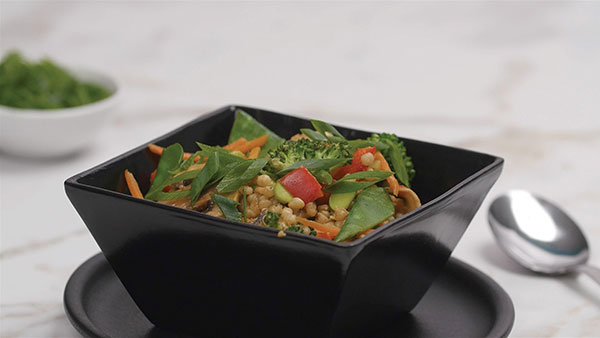10 Time-Saving Tips for a Clean and Organized Home: Unlocking the Secrets to Effortless Cleaning and Organization!
Ever feel like there's not enough time in the day to keep up with house chores? You're not alone. Efficient home organization and cleaning can be quite the challenge. But, with the right strategies, achieving a clean and organized home doesn't have to consume all your time.
(This post contains affiliate links.)
This guide is filled with 10 time-saving tips to help you streamline your home management. You'll find innovative ways to prioritize tasks, use to-do lists effectively, set practical cleaning schedules, and even make decluttering less of a chore.
Whether you're struggling with maintaining a clutter-free living room, or finding it hard to stick to a cleaning routine, these tips will help you maximize your time and keep your home looking its best.
Ready for a home that's always guest-ready, without the stress? Let's dive in.
10 Time-Saving Tips for a Clean and Organized Home
Set Timers to Keep You on Task
Life is busy and finding time to clean and organize your home can be challenging. However, with a few time management tips, you can streamline your tasks and make the most out of your precious time. One effective strategy is to set timers to keep you on task. By setting specific time limits for each cleaning activity, you can stay focused and ensure you complete your tasks efficiently.
Time Management Tip
Setting timers is a simple yet powerful technique that helps you avoid getting overwhelmed by housecleaning tasks. For example, if you have 15 minutes to pick up the kitchen, set a timer for that duration. When the timer goes off, it signals that you're done with that particular task. Any remaining tasks can be tackled in another cleaning session. This approach allows you to allocate your time effectively and prevents you from spending excessive hours on a single cleaning activity.
Use Cleaning Schedules
Another useful time-saving tip is to create daily and weekly cleaning schedules. Breaking down your cleaning routines into manageable chunks ensures that you have dedicated time to address all necessary tasks. By having a clear plan in place, you can stay organized and avoid feeling overwhelmed by the workload. Implementing cleaning schedules may seem daunting at first, but you'll soon realize how effective they are in maintaining an organized and clutter-free household.
Use a Cleaning Caddy
To save time and stay organized, consider using a cleaning caddy. This handy tool allows you to keep all your cleaning supplies in one place, making it easy to access them while you clean. With a cleaning caddy, you won't waste time searching for specific cleaners or supplies. Instead, everything you need will be conveniently within reach, ensuring a swift and efficient cleaning process.
Multitask When You Can
Multitasking can be a great time-saving technique when it comes to cleaning. Look for opportunities to combine different tasks. For instance, you can tidy up and organize your desk while paying bills. While preparing dinner, rinse off dishes and load them into the dishwasher. Another useful time management tip is wiping down the shower with your towel right after you shower, preventing the build-up of soap scum. By multitasking, you can make the most of your time and accomplish multiple cleaning tasks simultaneously.
Declutter Your Life
Clutter can hinder your cleaning progress, so taking the time to declutter is essential. As you move through your home, take a few minutes each day to remove any items that don't belong or that you no longer need. Pay attention to small odds and ends that clutter surfaces like end tables or coffee tables. Additionally, periodically assess items you haven't used in a year and consider letting go of them. By incorporating daily decluttering habits, you can maintain a streamlined and organized living space with minimal effort.
Delegate the Duties
Remember, cleaning and organizing your home shouldn't be a solo endeavor. Delegate tasks to your family members, roommates, or even consider hiring a cleaning service. Getting everyone involved not only lightens your workload but also fosters a sense of shared responsibility. Keep in mind that everyone's expectations may differ, so communicate your cleaning goals and establish clear expectations to ensure a harmonious collaboration.
Organize Your Household
While organization ideas from social media platforms like Pinterest can be appealing, it's essential to find organization hacks that work for you and your household. Experiment with various strategies and identify what best suits your needs. Adopting a few practical and sustainable organization methods can make a significant difference in maintaining an orderly home environment.
10 Time-Saving Tips for a Clean and Organized Home
Use Cleaning Schedules
When it comes to maintaining a clean and organized home, having a cleaning schedule can be a game-changer. By breaking down your cleaning tasks into daily and weekly routines, you can save valuable time and ensure that your home stays spick and span. Let's explore two effective ways to implement cleaning schedules:
Create Daily Cleaning Schedule
Start by creating a simple daily cleaning schedule that includes quick tasks to be done each day. This could include making the bed, wiping down kitchen counters, sweeping the floors, and tidying up cluttered areas. By incorporating these tasks into your daily routine, you'll prevent dirt and mess from accumulating, making your weekly cleaning sessions much easier.
Establish Weekly Cleaning Routine
In addition to your daily cleaning schedule, it's important to establish a weekly cleaning routine. Dedicate specific days for deeper cleaning tasks such as vacuuming, dusting, cleaning bathrooms, and washing linens. By assigning these tasks to specific days, you can ensure that everything gets done without feeling overwhelmed.
Using cleaning schedules helps you stay organized and prevents tasks from piling up. These routines not only save time but also contribute to a cleaner and more harmonious living environment.
Stay tuned for more time-saving tips for a clean and organized home!
10 Time-Saving Tips for a Clean and Organized Home
Use a Cleaning Caddy
Keep yourself organized and save time by using a cleaning caddy. This handy tool allows you to have all your cleaning supplies in one place, making it easy to access everything you need while cleaning your home.


Benefits of Using a Cleaning Caddy
- Efficiency: With a cleaning caddy, you won't waste time searching for cleaning products or tools. Everything is neatly organized and within reach, allowing you to clean efficiently.
- Portability: You can easily carry your cleaning caddy from room to room, eliminating the need to go back and forth to grab supplies. This saves you time and energy.
- Organization: A cleaning caddy helps you keep your cleaning supplies organized. You can categorize items and arrange them in a way that makes cleaning tasks more manageable.
- Time-saving: By having all your supplies in one place, you'll spend less time searching and more time actually cleaning. This can significantly reduce the overall time it takes to clean your home.
Essential Supplies for Your Cleaning Caddy
When assembling your cleaning caddy, make sure to include these essential supplies:
- All-purpose cleaner: A versatile cleaner that can be used on multiple surfaces.
- Glass cleaner: For streak-free windows and mirrors.
- Disinfectant wipes or spray: To quickly sanitize surfaces.
- Microfiber cloths: These are great for dusting and wiping down various surfaces.
- Gloves: Protect your hands from harsh chemicals.
- Scrub brush: For tackling tough stains and grime.
- Broom and dustpan: Essential for sweeping up dirt and debris.
- Vacuum cleaner: A versatile tool for cleaning floors, carpets, and upholstery.
By having these essential supplies in your cleaning caddy, you'll be well-equipped to handle any cleaning task that comes your way.
Multitask When You Can
Efficiency is the key to maintaining a clean and organized home without spending countless hours on chores. One effective way to maximize your time is by multitasking. By combining cleaning tasks and streamlining your routine, you can achieve remarkable results in less time. In this section, we will explore various strategies to help you become a master of multitasking.
Ways to Combine Cleaning Tasks
Why spend extra time tackling cleaning tasks separately when you can accomplish them together? Here are some ideas to help you combine cleaning tasks efficiently:
- Dual-purpose cleaning products: Opt for multi-surface cleaners that can be used on different areas of your home. This way, you can clean multiple surfaces without switching products constantly.
- Time-saving appliances: Invest in appliances that can perform multiple tasks simultaneously. For example, while your washing machine is running, you can wipe down kitchen countertops or sort through a pile of laundry.
- Zone cleaning: Instead of cleaning room by room, focus on similar tasks throughout your home. Dust all the surfaces in one go, vacuum the entire house at once, or mop the floors consecutively. This approach saves time by minimizing the need to switch between different cleaning tools and supplies.
Tips for Efficient Multitasking
Multitasking can be a game-changer, but it requires some planning and organization. To make the most of your multitasking efforts, consider the following tips:
- Prioritize your tasks: Identify the most crucial cleaning tasks that need your immediate attention. By focusing on these first, you can ensure that the most important areas of your home are taken care of.
- Create a schedule: Plan your cleaning sessions in advance and allocate specific time slots for each task. Having a schedule helps you stay on track and avoid getting overwhelmed.
- Stay organized: Keep your cleaning supplies easily accessible and well-organized. This way, you won't waste time searching for the right tools when you need them.
- Break tasks into smaller chunks: If a cleaning task seems too daunting, divide it into smaller, manageable parts. Tackle each part one at a time, and before you know it, the entire task will be complete.
- Listen to podcasts or audiobooks: Make your cleaning sessions more enjoyable and productive by listening to informative podcasts or captivating audiobooks. This way, you can learn something new while getting your chores done.
Remember, efficiency is the key when it comes to multitasking. By combining cleaning tasks and implementing smart strategies, you can save time and achieve a clean and organized home without feeling overwhelmed.
Declutter Your Life
Living in a clean and organized home not only helps reduce stress but also saves you valuable time. Decluttering is an essential step towards achieving this goal. By implementing a daily quick decluttering routine and learning how to assess and let go of unused items, you can create a harmonious and clutter-free living space. Let's explore these strategies in more detail:
Daily Quick Decluttering Routine
Keeping clutter at bay doesn't have to be a daunting task. By incorporating a daily quick decluttering routine into your schedule, you can maintain a tidy home without feeling overwhelmed. Here's a simple step-by-step guide:
- Start with a specific area: Begin by focusing on a small area of your home, such as a countertop, a drawer, or a shelf.
- Sort and categorize: Assess the items in that area and categorize them into three groups: keep, donate or sell, and discard.
- Make decisions swiftly: Avoid indecision by asking yourself if you have used or needed each item within the past six months. If not, consider letting it go.
- Find a home for everything: Return the items you decide to keep to their designated places, ensuring everything has a proper storage spot.
- Maintain the habit: Repeat this routine daily, gradually working through each area of your home. Consistency is key to maintaining a clutter-free environment.
How to Assess and Let Go of Unused Items
One of the biggest challenges in decluttering is deciding what to keep and what to let go. Here are some helpful strategies to assess and part ways with unused items:
- Question its usefulness: Ask yourself if the item serves a practical purpose or brings you joy.
- Consider its sentimental value: Sentimental items can be difficult to let go of, but you can take photos of them to preserve the memories while freeing up physical space.
- Set realistic goals: Determine how many of a certain item you actually need. For example, do you really need ten coffee mugs or twenty pairs of shoes?
- Donate or sell: If an item is in good condition but no longer needed, consider donating it to a local charity or selling it online. This way, someone else can benefit from it.
- Recycle or dispose responsibly: For items that are no longer usable, check your local recycling guidelines or find appropriate disposal methods to minimize environmental impact.
Remember, decluttering is not about getting rid of everything you own; it's about creating a more intentional living space. By following a daily quick decluttering routine and thoughtfully assessing your belongings, you'll be well on your way to enjoying a clean and organized home.
 |
Cleaning Checklist Printable for Sale
|
10 Time-Saving Tips for a Clean and Organized Home
Delegate the Duties
Keeping a clean and organized home can sometimes feel like an overwhelming task. However, one effective way to make the process more manageable is to delegate cleaning tasks to others. By getting others involved in the cleaning process, you not only lighten your own workload but also reap several benefits.
Benefits of Getting Others Involved in Cleaning
1. Shared Responsibility: When you delegate cleaning duties to others, you distribute the workload evenly. This not only reduces the burden on you but also promotes a sense of shared responsibility among all household members.
2. Time Savings: With more people involved in cleaning, tasks can be completed more quickly. This allows you to save valuable time that can be invested in other important aspects of your life.
3. Enhanced Efficiency: Different individuals bring unique skills and perspectives to the table. By delegating cleaning tasks, you can leverage the strengths of others and achieve greater efficiency in maintaining a clean and organized home.
Effective Ways to Delegate Cleaning Tasks
1. Communicate Clearly: Clearly outline the tasks that need to be done and discuss expectations with those you are delegating to. Effective communication ensures that everyone understands their responsibilities and can contribute effectively.
2. Establish a Schedule: Set a regular cleaning schedule that fits everyone's availability. This helps ensure that cleaning tasks are consistently completed and avoids any confusion or last-minute rush.
3. Assign Specific Tasks: Divide cleaning tasks based on each person's strengths and preferences. Assigning specific tasks allows individuals to focus on what they are good at, increasing productivity and satisfaction.
4. Provide Clear Instructions: When delegating tasks, provide clear instructions on how you would like them to be done. This helps maintain consistency in cleaning standards and ensures that everyone understands the expectations.
5. Offer Support and Appreciation: Encourage and support those involved in cleaning tasks by providing guidance, resources, and expressing gratitude for their contribution. This fosters a positive environment and motivates continued participation.
Remember, a clean and organized home is a team effort. By delegating cleaning tasks and involving others, you can create a more efficient and enjoyable living space for everyone.
Organize Your Household
Keeping your home clean and organized can feel like a never-ending task. But with a few simple organization hacks and a well-maintained system, you can achieve a tidy home without spending hours on cleaning. In this section, we'll explore some practical tips to help you streamline your household organization.
Simple Organization Hacks for a Tidy Home
1. Use storage bins and baskets: Invest in clear storage containers or decorative baskets to keep your belongings organized. Label each container to easily identify its contents, making it a breeze to find what you need when you need it.
2. Create designated spaces: Assign specific areas for different items in your home. Designate a spot for keys, mail, shoes, and other frequently used items. By having a designated place for everything, you'll avoid clutter and save time searching for misplaced items.
3. Maximize vertical storage: Take advantage of vertical space in your home by using wall-mounted shelves, hanging organizers, or over-the-door hooks. This allows you to utilize space efficiently and keep items off the floor or countertops.
4. Implement a filing system: Establish a filing system for important documents, bills, and paperwork. Use labeled folders or file organizers to keep everything organized and easily accessible. This will save you time when you need to find specific documents.
How to Maintain Organizational Systems
1. Regular decluttering sessions: Set aside dedicated time for decluttering your home. Go through each room and assess items you no longer need or use. Donate or discard these items to keep your space clutter-free and maintain an organized environment.
2. Stick to a cleaning routine: Establish a cleaning schedule that works for you. Break down your cleaning tasks into daily, weekly, and monthly chores. By following a routine, you'll avoid overwhelming cleaning sessions and ensure everything stays organized and tidy.
3. Involve the whole family: Delegate household chores to family members or roommates. Assign specific responsibilities to each person, ensuring everyone contributes to maintaining a clean and organized home. This not only lightens your workload but also teaches valuable life skills to others.
4. Regularly reassess and adjust: Periodically evaluate your organizational systems to identify any areas that may need improvement. Adjust your storage solutions or routines as needed to better suit your changing needs and lifestyle.
By implementing these simple organization hacks and maintaining your systems, you can enjoy a clean and organized home without feeling overwhelmed. Start small, be consistent, and soon you'll reap the benefits of a tidier living space.
Conclusion
In conclusion, implementing these 10 time-saving tips for a clean and organized home will not only streamline your cleaning processes but also free up more time for the things you love. By setting timers for specific tasks, you can avoid getting overwhelmed and stay on track. Incorporating cleaning schedules into your daily and weekly routines will ensure that your home stays tidy and clutter-free. Utilizing a cleaning caddy will keep all your supplies easily accessible, saving you precious time searching for them. Multitasking whenever possible allows you to accomplish multiple cleaning tasks simultaneously. Decluttering regularly and delegating duties to others will lighten your workload and make cleaning less stressful. And finally, finding simple and practical organization hacks that work for you will help maintain a tidy and efficient household. By following these tips, you'll be well on your way to enjoying a clean and organized home without sacrificing valuable time.

 "'Miniclover' (Trifolium repens) is about 1/3-1/2 the size of white Dutch clover, only grows 4-6 inches and produces a thick, carpet-like look that blends well with turf,” said Troy Hake, president and owner of Outsidepride.com, offering drought-tolerant grasses, clovers, wildflower seeds and more. “It’s less expensive than grass seed and a natural solution for self-sustaining, low-maintenance lawns that look beautiful and help eliminate the need for fertilizers, herbicides, pesticides and weekly mowing. We sold out of it for the past two years, even with a two-fold increase in production. You can’t go wrong with it.”
"'Miniclover' (Trifolium repens) is about 1/3-1/2 the size of white Dutch clover, only grows 4-6 inches and produces a thick, carpet-like look that blends well with turf,” said Troy Hake, president and owner of Outsidepride.com, offering drought-tolerant grasses, clovers, wildflower seeds and more. “It’s less expensive than grass seed and a natural solution for self-sustaining, low-maintenance lawns that look beautiful and help eliminate the need for fertilizers, herbicides, pesticides and weekly mowing. We sold out of it for the past two years, even with a two-fold increase in production. You can’t go wrong with it.”






.png)

.png)












